Types and varieties of chrysanthemums

Professional landscape designers and amateur gardeners today have the opportunity to decorate flower beds with a huge number of flowering crops. Among this variety, it is worth highlighting chrysanthemums, represented by species and varietal diversity, where each variety stands out for its unique attractiveness.
Classification according to various criteria
In light of the large number of varieties of chrysanthemums, the available diversity requires a well-ordered classification. That is why the garden and botanical grouping of artificially bred plants, as well as wild species and varieties, provides for the division of chrysanthemums according to a number of characteristics. The grouping of cultures is as follows.


Life cycle
There are two types of plants in this category.
- Perennial chrysanthemums - most of this category is occupied by greenhouse and Korean flowers. They are distinguished by lush and abundant flowering, as well as resistance to all weather conditions. Most of the crops are cut.
- Annual varieties are notable for a high level of adaptation to any conditions, frost resistance, in addition, flowers require fairly simple agricultural techniques. As a rule, annual chrysanthemums are able to bloom before the arrival of the first fall frost.


Flowering period of crops
In this category, plants are usually divided into groups, taking into account the months in which they bloom. Today, the following types of chrysanthemums are distinguished.
- Flowers that bloom in November. These plants are late varieties.
- Chrysanthemums blooming in October are medium.
- Early species and varieties usually bloom in September.
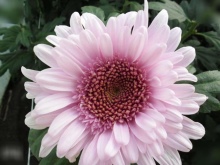
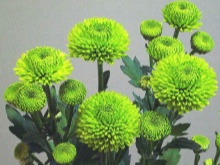
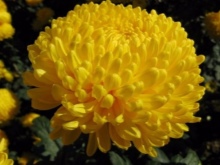
Frost resistance
Since these crops are grown in different regions, where winters differ significantly in their temperature indicators, chrysanthemums are divided into two groups.
- Plants with a high degree of frost resistance. As a rule, such flowers can withstand even the first snow with a decrease in the marks on the thermometer. Among the winter-hardy varieties, the most viable crops are considered to be undersized terry chrysanthemums.
- The second group contains plants that are recommended to be cultivated only in southern and mild climates. This is due to the late flowering of chrysanthemums, which begins in late autumn.
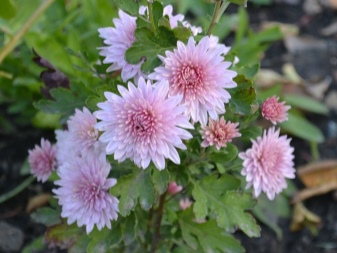

Inflorescence sizes
Considering the diameter of the flowers, the chrysanthemums can be as follows.
- Mid-flowered - they can be grown not only in the open field, but also on the balcony, veranda, windowsill. As a rule, the size of the inflorescences of such chrysanthemums will be 10 centimeters.
- Large-flowered - varieties and species of this category have a diameter of inflorescences within 25 centimeters. It is these varieties that are mostly grown for the subsequent creation of bouquets and other floral arrangements.
- Small-flowered chrysanthemum will have a small size, as well as the smallest flower diameter, which usually does not reach 10 centimeters.
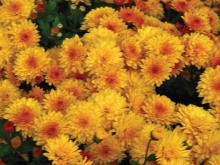
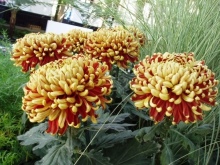
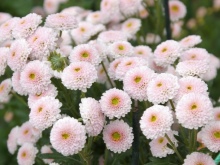
Inflorescence shape
In light of the presence of a large number of different chrysanthemums, it is also customary to divide them, taking into account the appearance of the flower itself. Today, among wild and hybrid crops, the following are distinguished.
- Simple - such a flower has many similarities in appearance with an ordinary chamomile.Chrysanthemums usually have a completely open core, and straight petals are arranged around in several rows. The colors of simple crops may vary.
- Terry varieties stand out with closed petals in large numbers, which will grow in one row in a circle.
In light of the development of new varieties and species of chrysanthemums, the above classification can be supplemented by a number of other plant groups.

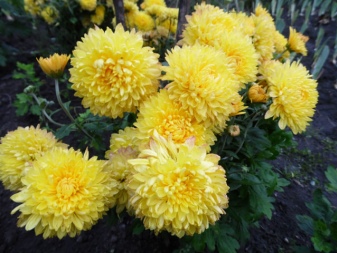
Description of species
Today, chrysanthemum is represented by a huge number of species. Among the most sought-after artificially bred flowers that grow in the wild, the following species are worth highlighting.
Indian
Despite its name, China is the birthplace of culture. This species is very often used as a mother plant for producing small hybrid chrysanthemums. As a rule, flowering in plants occurs in the autumn months. These are bright plants, notable for their visual appeal.
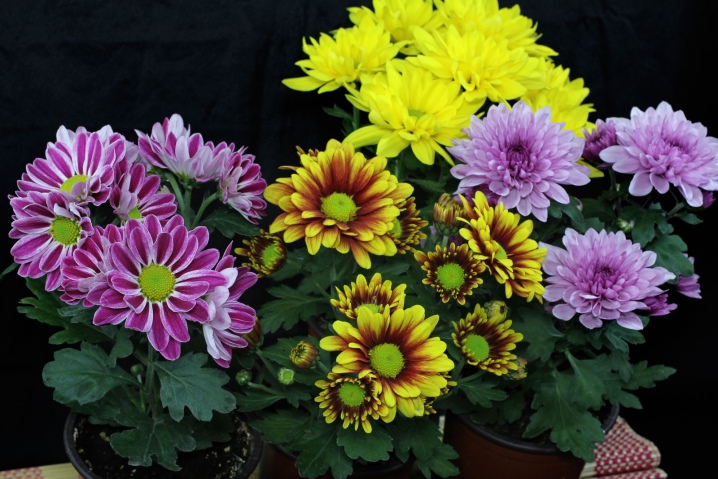
Korean
This species includes hybrid plants with small diameter inflorescences. Flowers firmly endure negative temperatures, in the open field they can be successfully grown even in the middle lane.
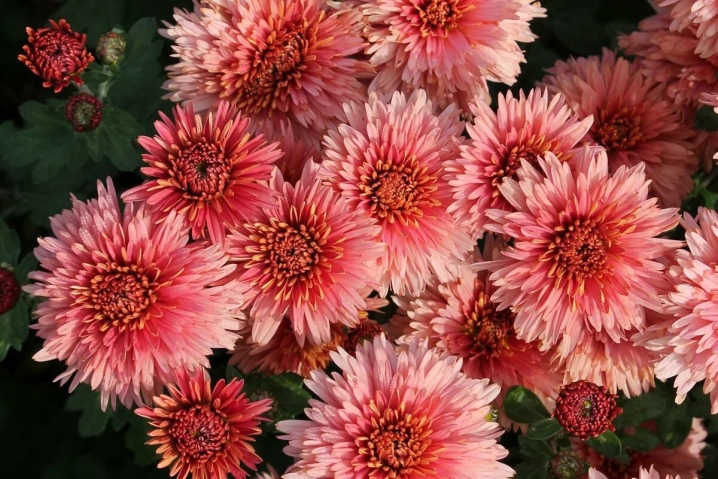
Autumn
Shrub perennials, flowering in September, and the duration of this phase allows you to see blooming chrysanthemums until winter. The inflorescences of the crops are simple, predominantly white in color.
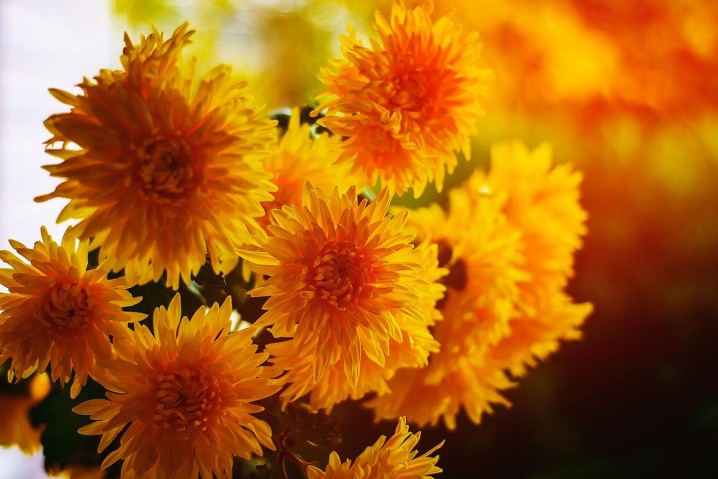
Prominent
Chrysanthemums are large in size, the height of which can reach 120 centimeters. The bushes of the culture are quite large and fluffy. In this case, the inflorescences can be not only simple, but also terry. Most of the color is yellow and white. As a rule, the diameter of the inflorescences reaches 5-8 centimeters.

Sowing
Chrysanthemums develop an erect stem, the height of which usually varies between 40-60 centimeters. The flowers are outwardly similar to chamomile. The color of the inflorescences is white, sometimes there are yellow varieties. The average flower size is in the range of 4-5 centimeters.
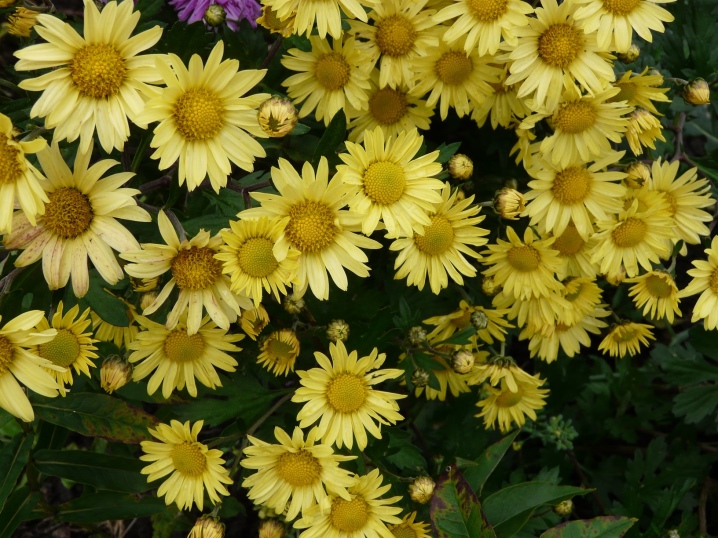
Odorless
A dwarf bush, which is usually 18-20 centimeters high. Chrysanthemums develop terry-type inflorescences, painted in a snow-white color, no more than 5 centimeters in size.
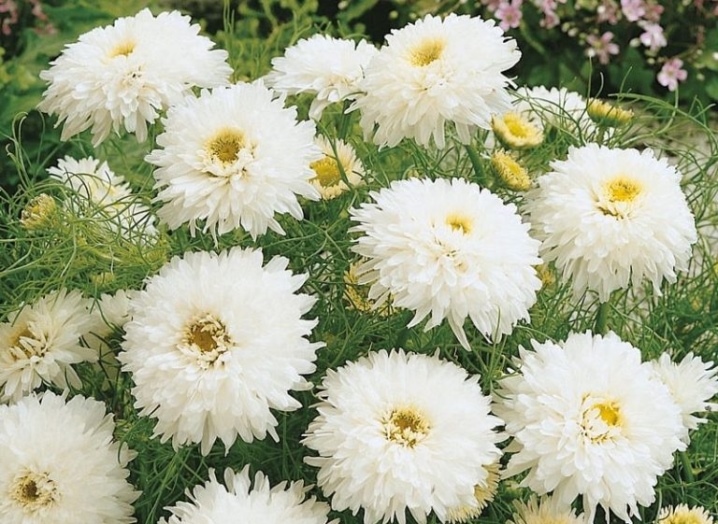
Scaphoid
A flower whose height will be from 40 to 75 centimeters. Baskets can be anything, cultures are mostly multi-colored. The diameter of the inflorescences varies between 5-6 centimeters.
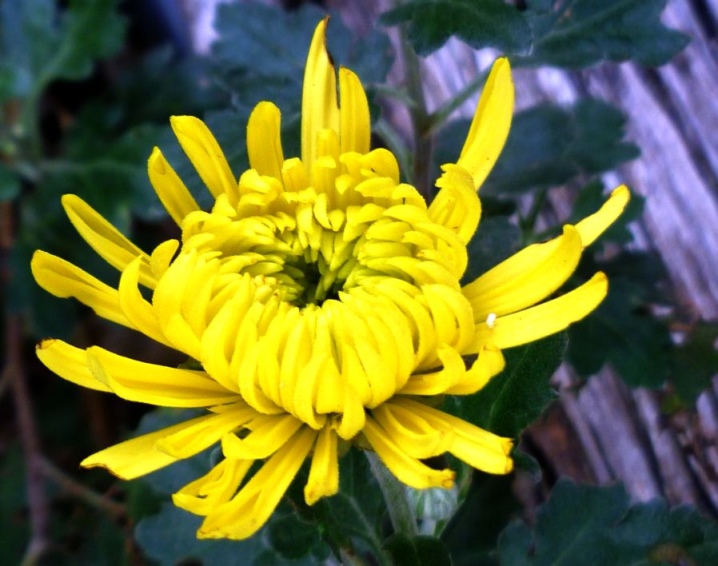
Crowned
A branchy shrub with straight stems, developing up to 80-85 centimeters in height. The inflorescences are simple or double. The color is white or yellow. The diameter of the inflorescences does not exceed 7 centimeters.
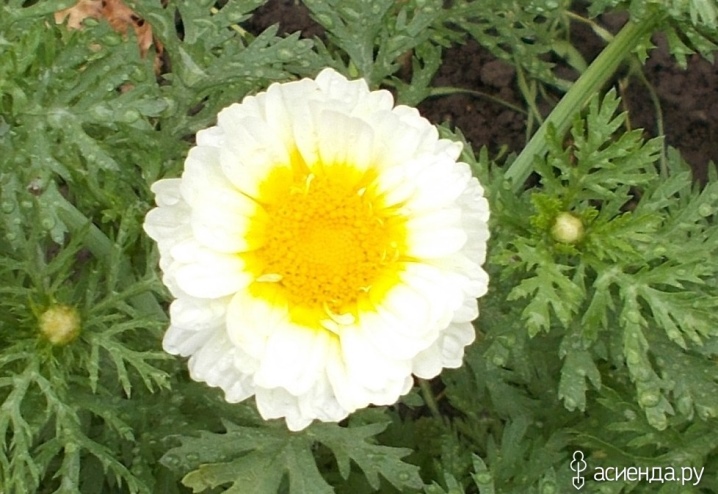
Arctic
A perennial of medium size, which is found naturally in northern Europe, as well as in Asia and America. The species is popular due to its frost resistance. The culture has creeping stems that form a beautiful carpet, the flowering phase in plants occurs in October-November.
Due to their small size, chrysanthemums wintering outdoors can be successfully grown in pots at home.
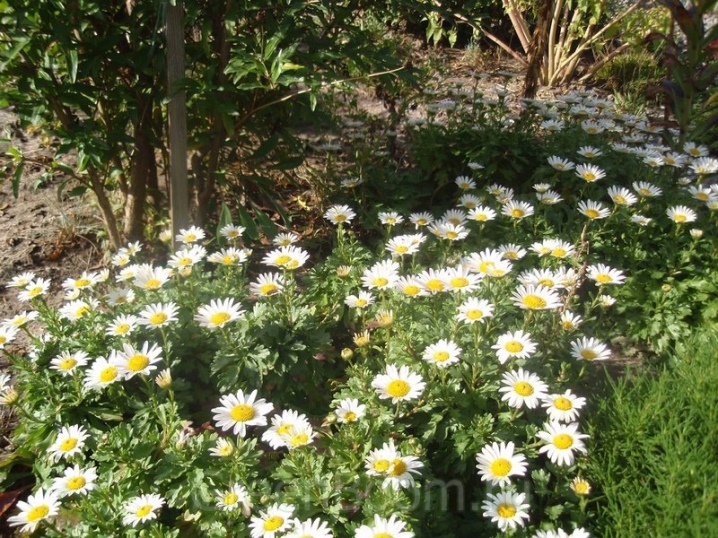
Swamp
A medium-sized plant, the inflorescences of which are outwardly similar to field chamomile. The flower develops in the form of a bush, on which many stems are formed, located at an angle or in an erect form with flowers at the tops.
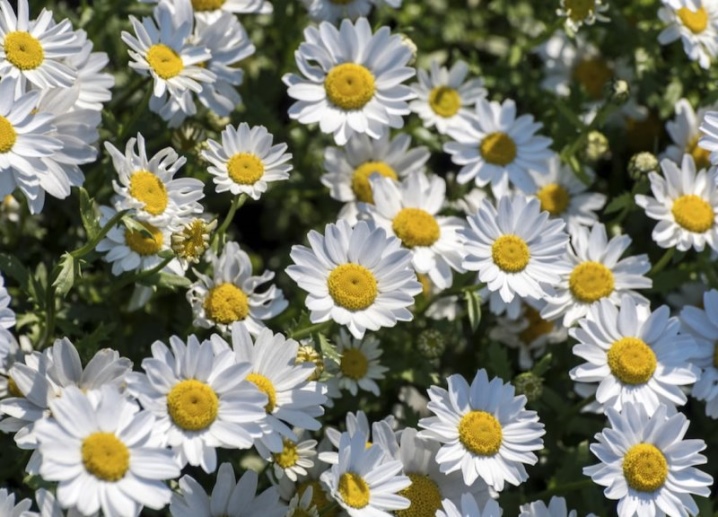
Keeled
A culture whose height is 60 centimeters. May have a different color of inflorescences. The species is represented by varieties with simple or double flowers. Some varieties reach only 30 centimeters in height, there are also representatives with a stem height of 70-90 centimeters.
In addition, there are Dutch, vegetable, Japanese, Korean chrysanthemums.
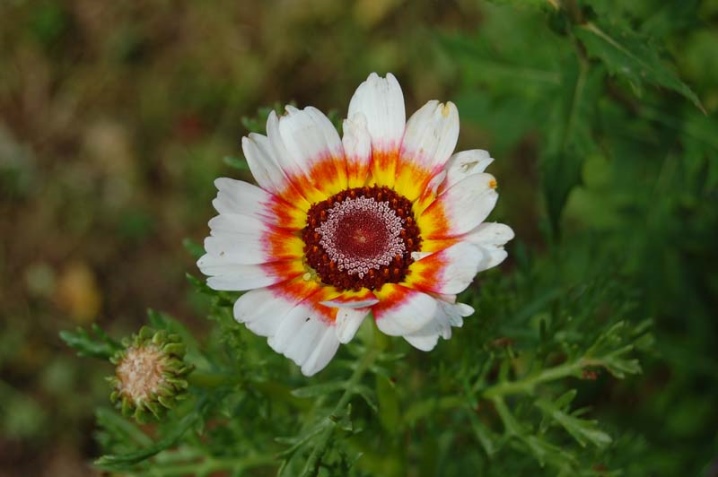
Varietal variety and their shades
Today, the list of varieties of chrysanthemums is striking in its variety and quantity. Among the flowers that are in great demand among gardeners, several are worth noting.
- "Valentina Tereshkova". Culture is the fruit of the labors of Crimean breeders. Chrysanthemum belongs to the early large varieties. The variety is popular due to the red color of the petals interspersed with raspberry, which are located on top.
At the same time, the bright basket is complemented by no less attractive needle-like petals at the bottom, which have a lighter color.
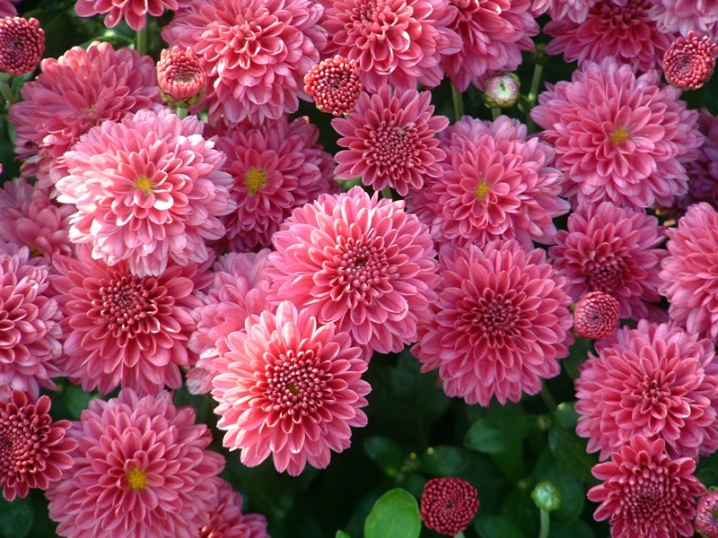
- "Gazelle". Chrysanthemum inflorescences of this variety have the shape of a semicircle. This crop belongs to the group of large garden plants, since the diameter of the inflorescence is 15 centimeters. Terry variety, the inflorescences of which are painted white. Flowering occurs at the end of summer.

- "Alex Bedser". Large chrysanthemum, stretching up to 70-80 centimeters in height. Inflorescences develop in diameter up to 15 centimeters, have a spherical shape. The variety can have a different color of the petals, the flowering phase occurs at the end of October, usually lasts until the arrival of severe frosts.
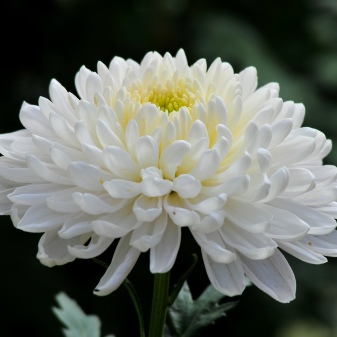
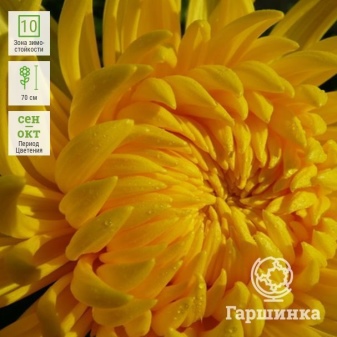
- Flammenstahl. An annual that must be sown in the garden annually with seeds. The flower of the chrysanthemum of this variety is colored red at the edges, with a beautiful transition closer to the middle to yellow. The culture has an external resemblance to the inflorescence with chamomile.
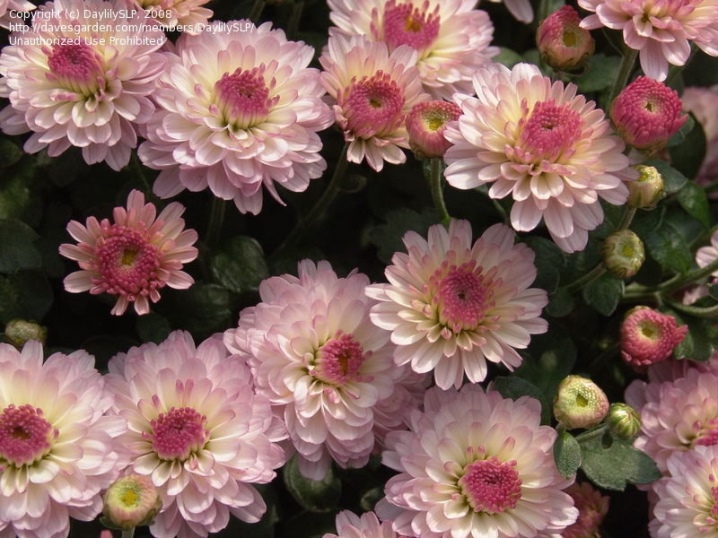
- "Multiflora". A curb chrysanthemum of compact size, which lengthens by no more than 30 centimeters. The plant blooms in late summer. The flower does not require specific growing conditions, does not need an additional garter.
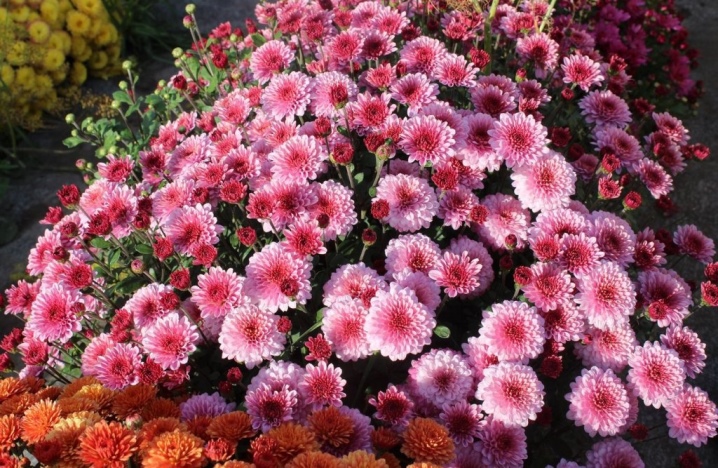
- "Vivat botany". A representative of Korean chrysanthemums, a perennial that blooms from the end of August. The culture is in demand due to the abundant flowering. The bush is of medium size - on average, its height will be 50-55 centimeters. The diameter of the flowers is small - from 5 to 6 centimeters. The color of chrysanthemums of this variety will be yellow closer to gold. The plant has good immunity to many diseases, tolerates negative temperatures and heat.
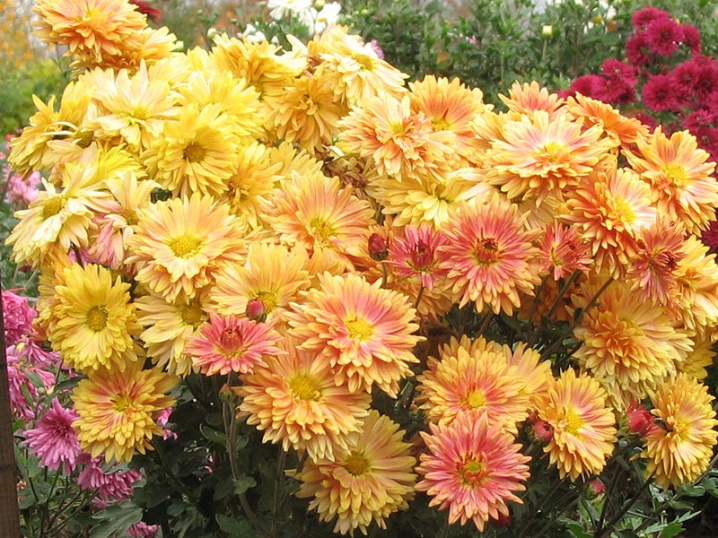
- "Dune". Perennial growing up to one and a half meter mark. Flowers are used to create bouquets. The diameter of the basket usually does not exceed 6-7 centimeters. Such a culture is in demand due to its characteristics to change the color of the petals during growth and development.
Chrysanthemum buds of this variety will be crimson, later, when they fully open, the flower will turn yellow or orange.
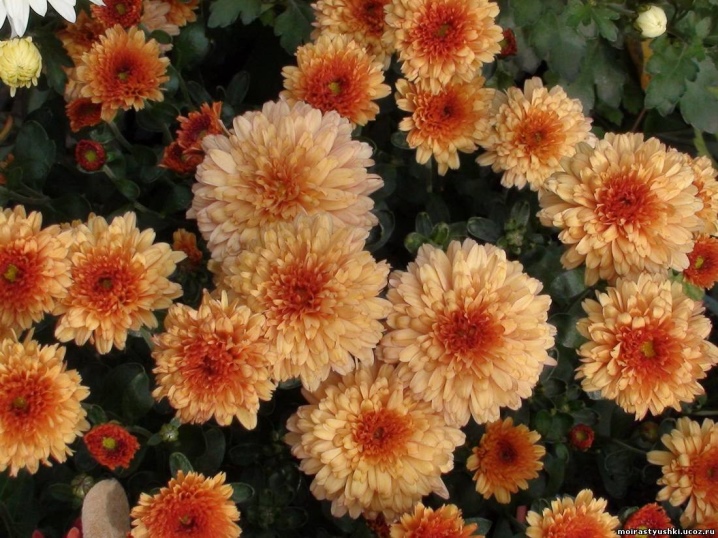
- "Anastasia". A perennial plant of the Korean variety, which, like the previous crop, changes the color of its petals. The cultivar will initially develop with pink or raspberry buds that turn yellow when ripe. Such a mix of flowers will decorate any flower bed.
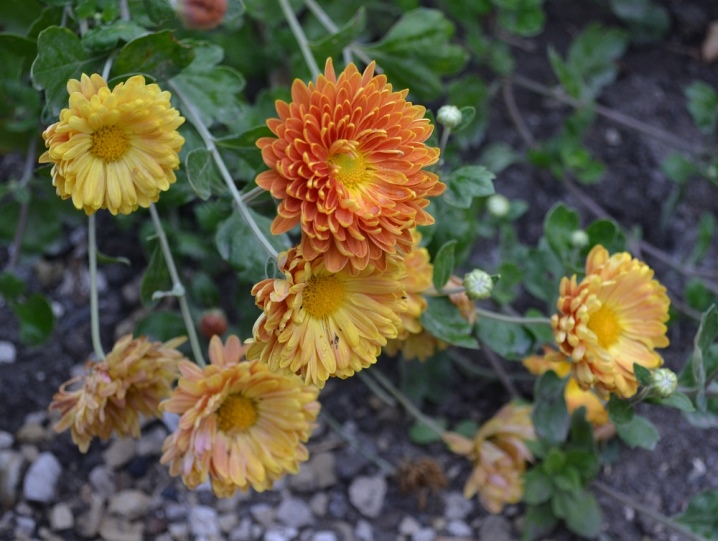
- "Korean Dawn". Chrysanthemum, which blooms quite early, has a height of about 50 centimeters, with an average diameter of inflorescences of 5-6 centimeters. The color of the petals will be yellow, close to copper.
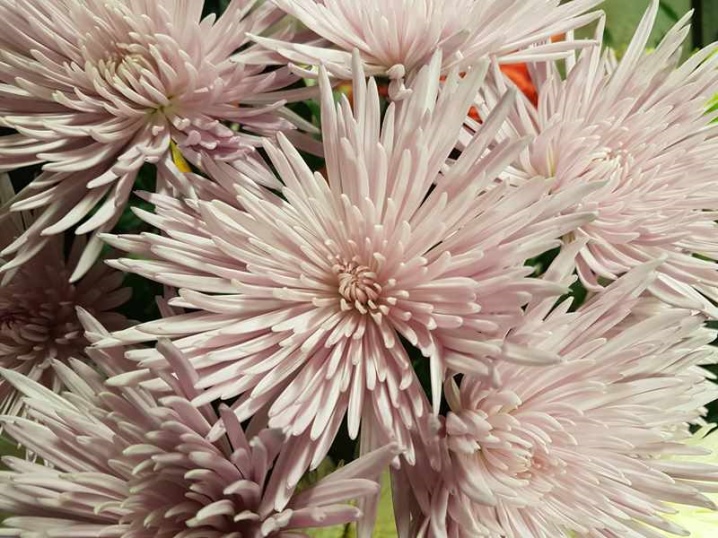
- Inga. A large flower with a yellow core and large inflorescences 9-10 centimeters long.

- "Yellow taffeta". A versatile chrysanthemum that thrives in almost any climate. Suitable for single or group planting due to the high stem - about 70 centimeters. Can appear in the background of flower arrangements. The diameter of the basket is 6-7 centimeters.
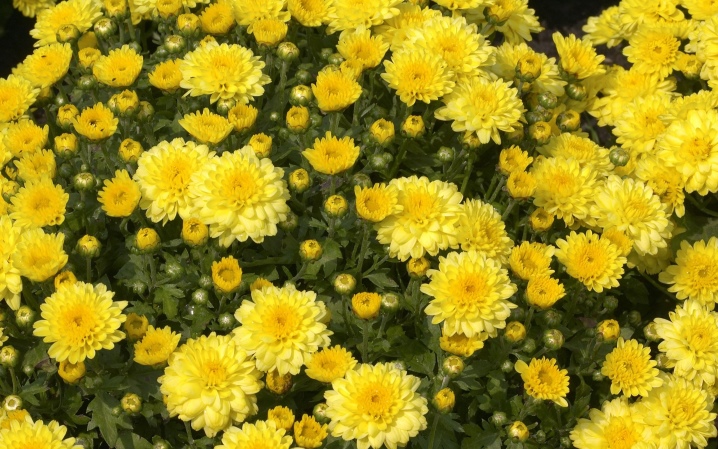
- "The Pink Artist". A variety that blooms for quite a long time. The chrysanthemum of this variety is large, as a rule, many lush baskets develop on it, having a striped color in pink and white.
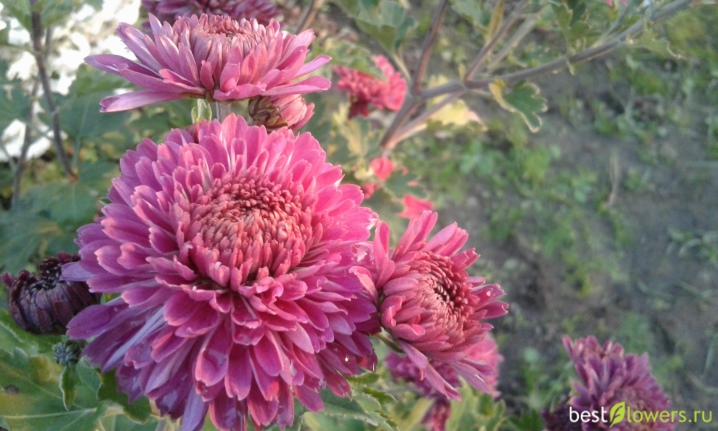
- "Crystal". A white decorative variety that attracts the attention of gardeners due to the large number of delicate flower baskets developing on small-sized stems.

- "Ventu". Chrysanthemum with anemic flowers. Inflorescences can be colored lilac, burgundy, yellow, purple or pink. Due to such a variety of colors in the garden, the culture will become the most memorable.
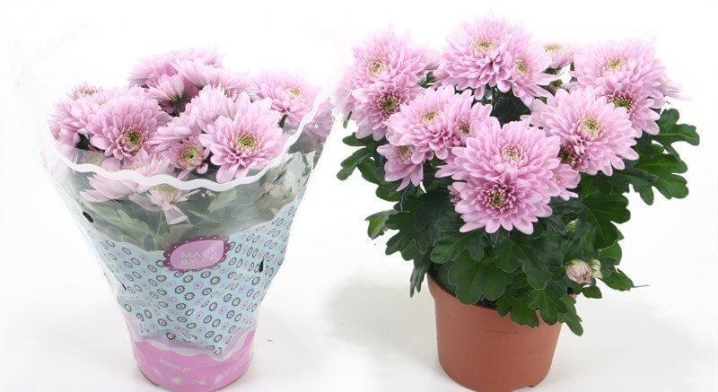
- Vimini. Chrysanthemum inflorescences of this variety are outwardly similar to miniature sunflowers. The color of the flowers will be appropriate. The petals can be orange, lemon, yellow, in the middle, the chrysanthemum has a brown core.

- Green Valley. The plant stands out for the interesting color of its inflorescences - it will be rich green. The baskets themselves are larger than average in diameter. The exotic appearance and color give rise to an increased interest in the variety.
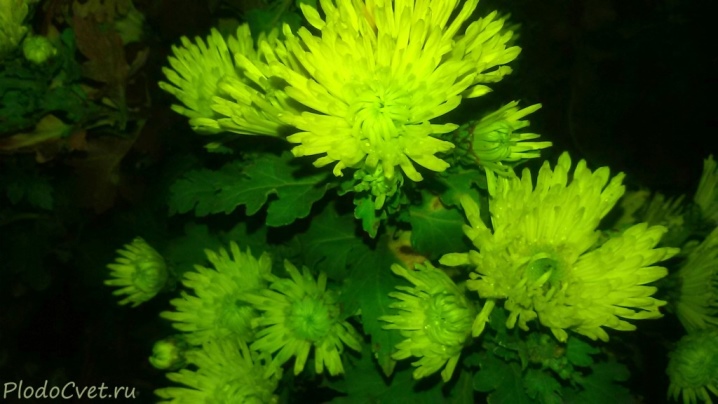
- "Zembla white". A culture with large-diameter inflorescences with snow-white petals. In composition or as a separately planted chrysanthemum, this variety looks very attractive.
This variety is also represented by a large number of crops. The color of the inflorescences of which can be green, yellow, purple, pink, purple.
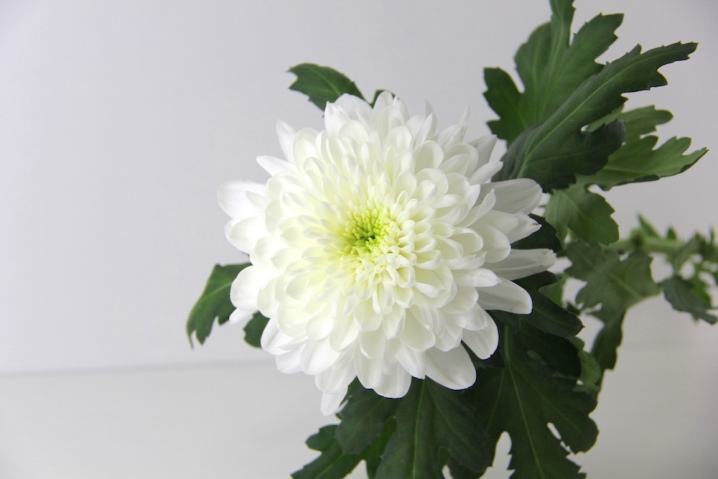
- "Carnival". Chrysanthemum with double inflorescences, which stands out for a long flowering period, as well as the beautiful shape of its flowers.

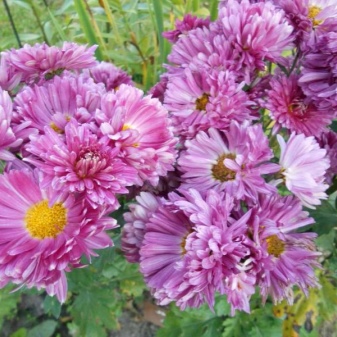
- Tobago. A beautiful chrysanthemum, the flowering of which makes it incredibly attractive. The color of the petals will be deep red with an anemic inflorescence shape.

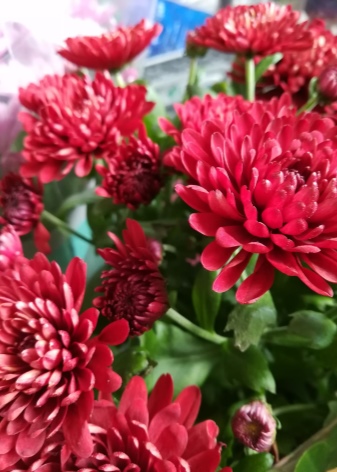
- Little Rock Festival. A crop that can be grown outdoors and in pots or containers indoors. The plant is notable for its colorful bloom, represented by red petals in the center, which are bordered by yellow.
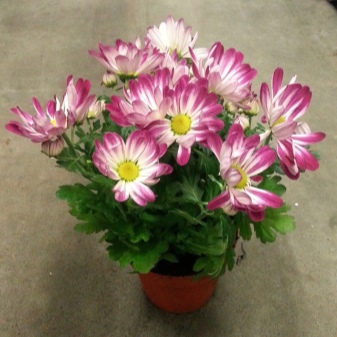
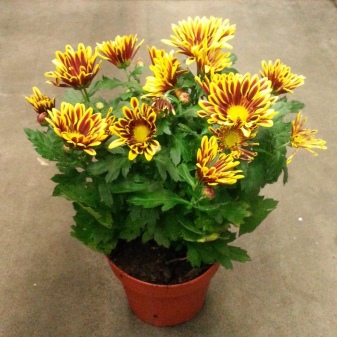
- "Tziya". The variety, which is small in size, blooms with rich burgundy inflorescences with a white edge. In this case, the core will be green.
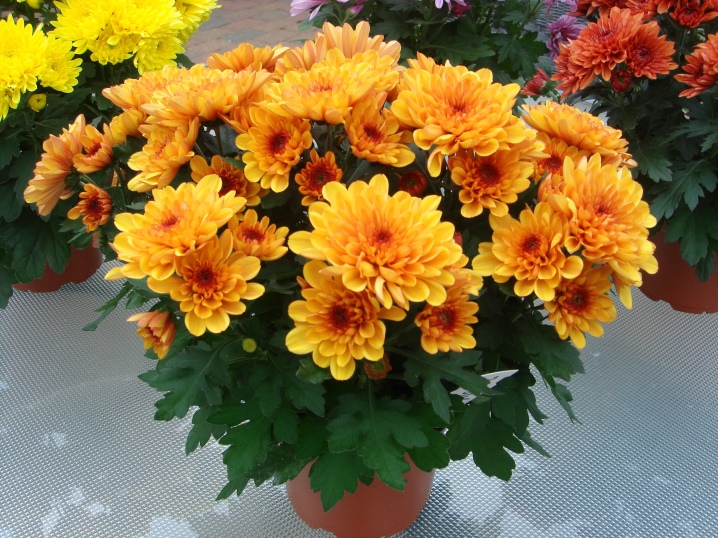
- Ellie Fleur. Chrysanthemum has a gradient color of the petals. The inflorescences will be large, in the middle the shade of the flower will turn out to be white, while the edges will turn purple.

In addition to the above varieties, ampel and peony varieties, as well as the following crops, are grown in the open ground and in flowerpots:
- "Saba";
- Baltika;
- Kennedy;
- Celebrate;
- "Stalion";
- "Joy";
- "Pina colada";
- "Chick";
- "Memphis";
- "Haydar";
- Momoko;
- Bontempi;
- "Optimist";
- "Grand Pink";
- Stellini;
- "Alenka";
- Serenity;
- "Umka";
- Talita;
- Memphis Dark;
- Lipstick;
- "Grand Salmon";
- Etrusco;
- "Purple Star";
- Holiday Purple;
- Memphis Cherry;
- "Sonechko".
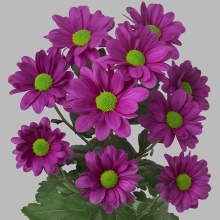
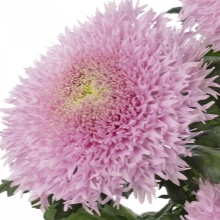
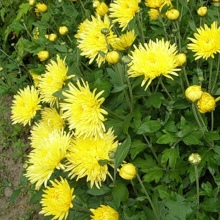
We take into account the climate and type of soil
Chrysanthemum belongs to light-loving crops, therefore, a climate with insufficient illumination for the cultivation of this plant should not be considered. Besides, the plant needs regular and abundant moisture, so regions with arid conditions will require the gardener to pay increased attention to the flower in the gardento achieve beautiful and long-lasting flowering. In an unfavorable environment, where the needs for sunlight and water are not met, the chrysanthemum can be rooted, but it may not enter the flowering phase at all.
Setting the goal of growing chrysanthemums in your own garden, it is worth choosing sites for its rooting in places that are reliably protected from the wind. Swampy areas, as well as areas in full shade, should be avoided, since soon after planting in the ground, the culture will begin to rot.

As for the most suitable soil for rooting chrysanthemums, it is recommended to give preference to neutral varieties or soils with low acidity. Many gardeners prefer to grow the crop in black soil. Avoid rooting the plant in a garden dominated by clay soil or sandy soil. It will be possible to normalize acidity indicators when using humus or vermicompost.
According to the recommendations of gardeners, for annual chrysanthemums it is best to use light soil rich in useful trace elements. As practice shows, keeled chrysanthemum grows and blooms best in calcareous soil, while when the sown species prefers soil with a minimum amount of lime. Perennials root in slightly acidic and loose soil.
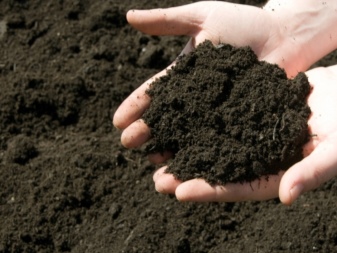
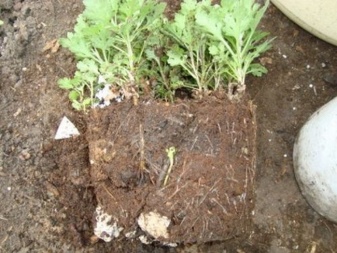
Crops are short-day plants, so they will begin to bloom when its duration is reduced to 8 hours. The optimum air temperature will be around +15 degrees.
To prevent the processes of plant degeneration, a chrysanthemum should grow in one place for no more than 5 years. After this period, it is recommended to rejuvenate the culture, and then transplant it to a new site in the garden.
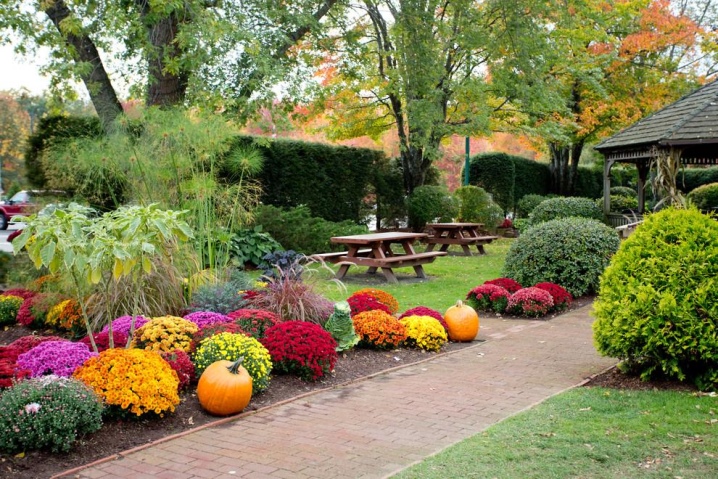
How to choose?
To correctly choose a blooming chrysanthemum for the garden, you should adhere to the following recommendations.
- In the front gardens, it is most correct to grow annual chrysanthemums belonging to the small-flowered varieties. In this case, you can annually have attractive plants of different color and appearance on your site. In addition, it will be possible to choose a different place for the location of flowering bushes every season.
- Flowers look most effective when decorating border flower beds, as well as as components of a flower arrangement, where chrysanthemums will be located at the front edge. In this case, even a monochromatic fit will look more attractive.
- Tall species and varieties are intended for creating hedges; you can purchase such crops for decorating the walls of various buildings. Also, large chrysanthemums root in the background of mixborders.
- For group plantings, Echinacea or verbena, asters, or ornamental cereal varieties of horticultural crops should be considered as the most suitable neighbor plants.
- Small or medium-sized varieties of chrysanthemums should be rooted in containers or pots, since plants with a high stem will need additional garter or support.
- For cutting, it is more correct to plant "large-headed" flowering varieties.

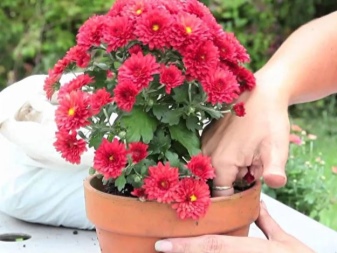
For all the intricacies of growing chrysanthemums, see the next video.







































































































The comment was sent successfully.